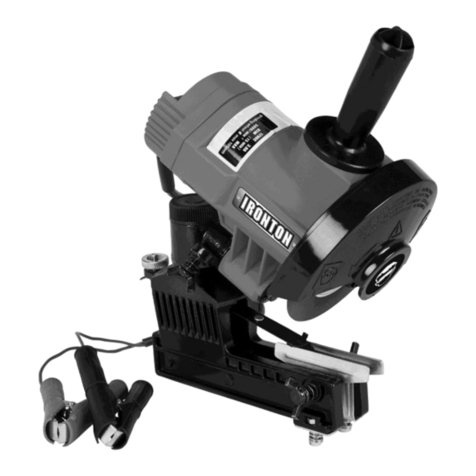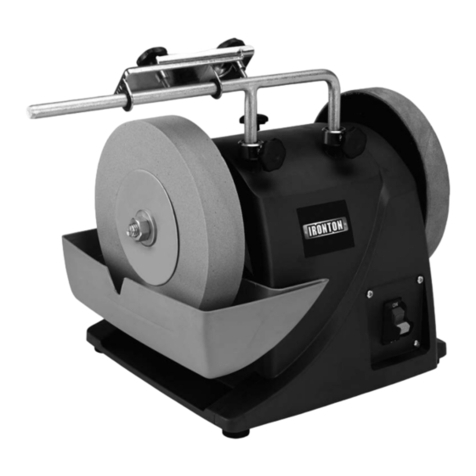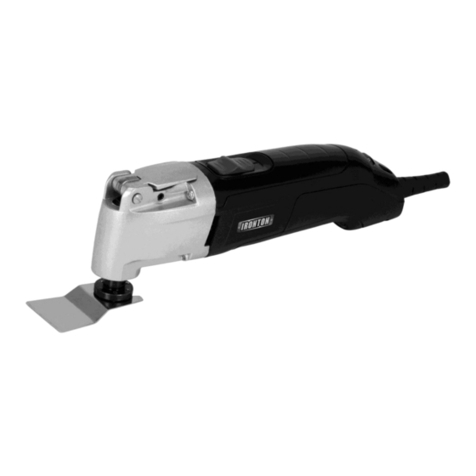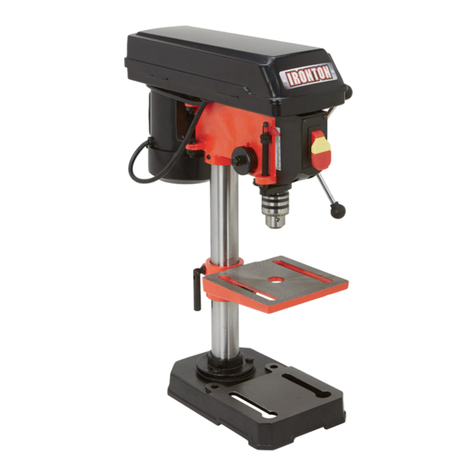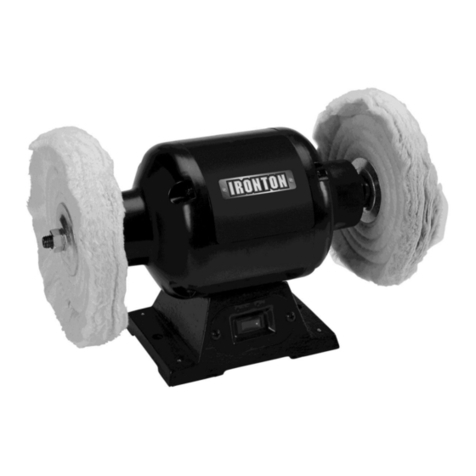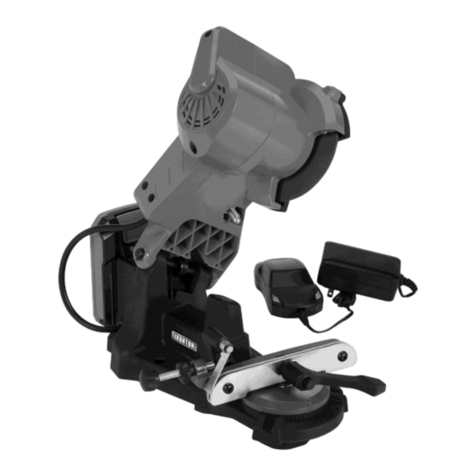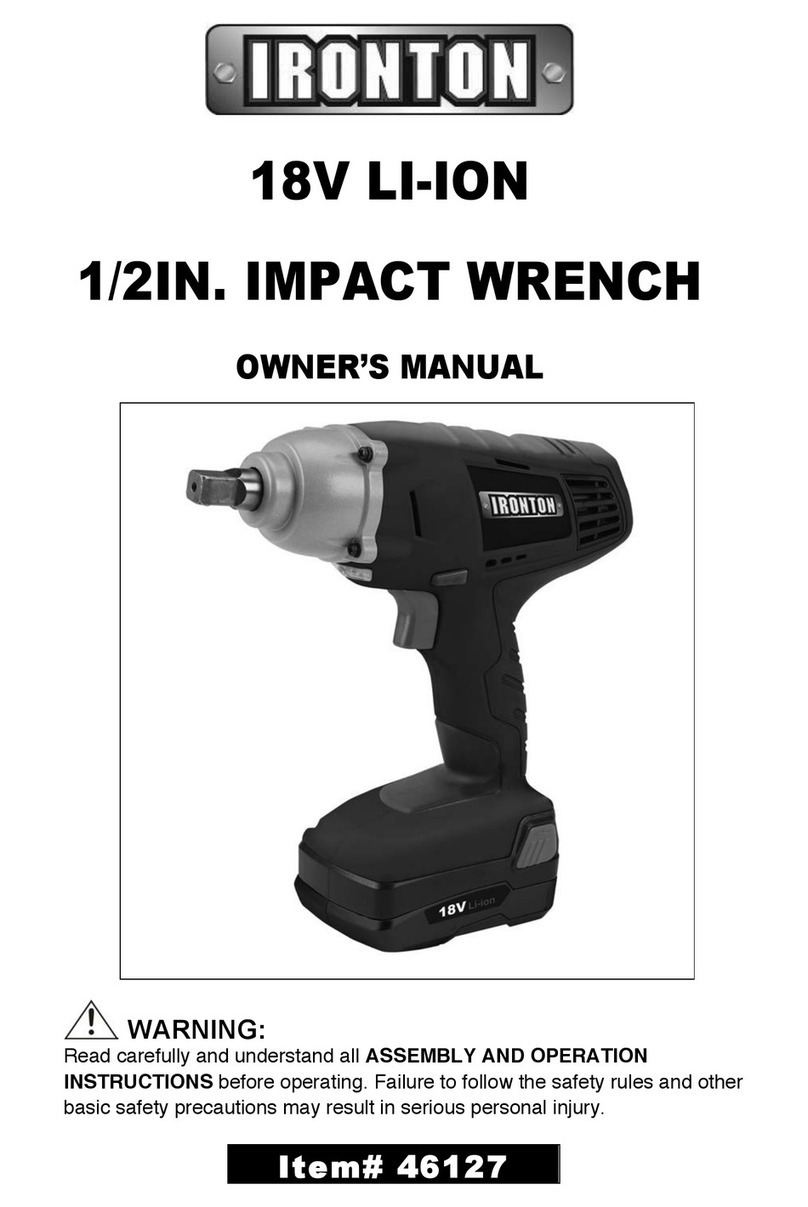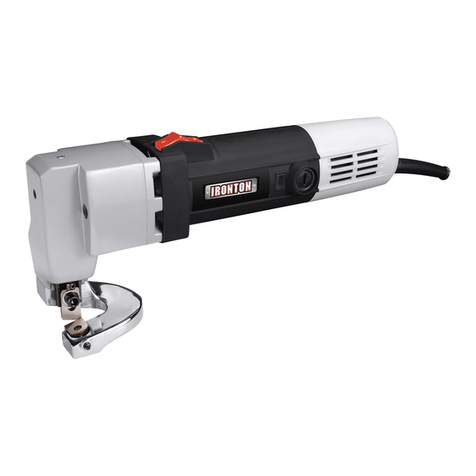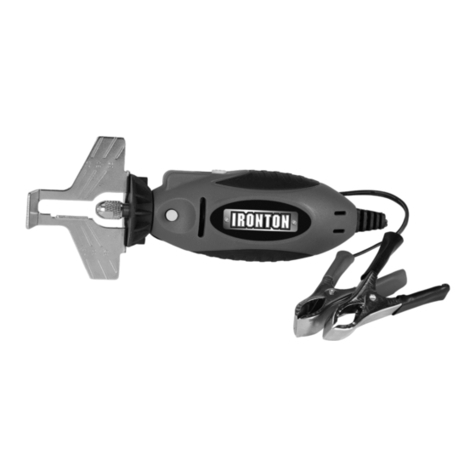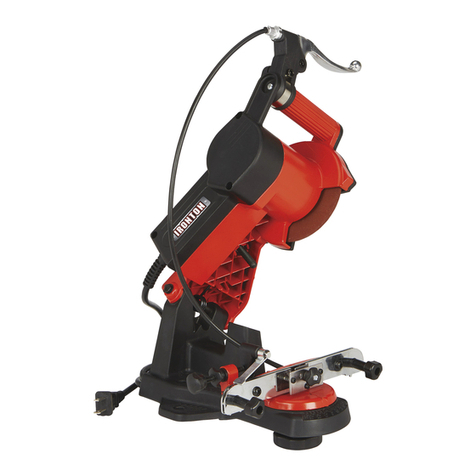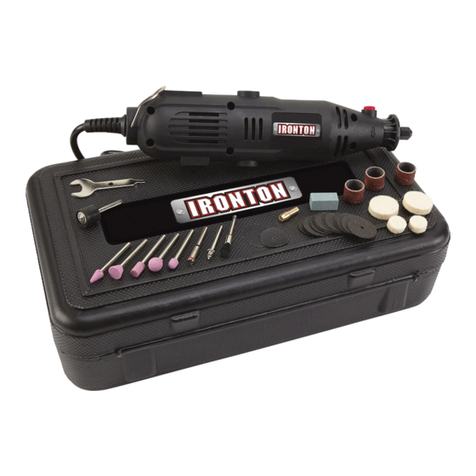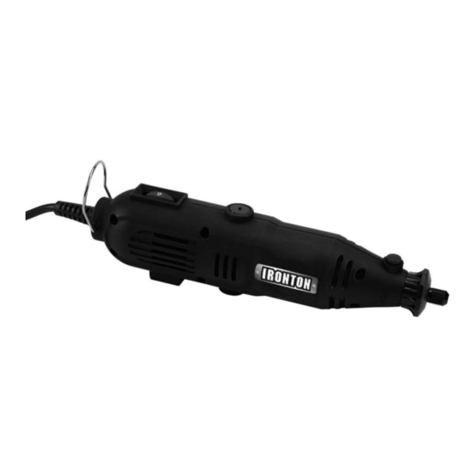e. Do not overreach. Keep proper footing and balance at all times. This enables better control of
the power tool in unexpected situations.
f. Dress properly. Do not wear loose clothing or jewelry. Keep your hair, clothing and gloves away
from moving parts. Loose clothes, jewelry or long hair can be caught in moving parts.
g. If devices are provided for the connection of dust extraction and collection facilities, ensure
these are connected and properly used. Use of dust collection can reduce dust-related hazards.
4. Power tool use and care
a. Do not force the power tool. Use the correct power tool for your application. The correct power
tool will do the job better and safer at the rate for which it was designed.
b. Do not use the power tool if the switch does not turn it on and off. Any power tool that cannot
be controlled with the switch is dangerous and must be repaired.
c. Disconnect the plug from the power source and/or the battery pack from the power tool before
making any adjustments, changing accessories, or storing power tools. Such preventive safety
measures reduce the risk of starting the power tool accidentally.
d. Keep cutting tools sharp and clean. Properly maintained cutting tools with sharp cutting edges
are less likely to bind and are easier to control.
e. Use the power tool, accessories and tool bits etc. in accordance with these instructions, taking
into account the working conditions and the work to be performed. Use of the power tool for
operations different from those intended could result in a hazardous situation.
5. Service
a. Have your power tool serviced by a qualified repair person using only identical replacement
parts. This will ensure that the safety of the power tool is maintained.
b. If the power cord is damaged, it must be replaced by the manufacturer, its service agent or
similarly qualified persons in order to avoid a hazard.
TILE CUTTER USE AND CARE
•Do not modify the Tile Cutter in any way. Unauthorized modification may impair the function
and/or safety and could affect the life of the equipment. There are specific applications for which
the Tile Cutter was designed.
•Always check of damaged or worn out parts before using the Tile Cutter. Broken parts will
affect the Tile Cutter operation. Replace or repair damaged or worn parts immediately.
•Store idle Tile Cutter. When Tile Cutter is not in use, store it in a secure place out of the reach
of children. Inspect it for good working condition prior to storage and before re-use.
•Make sure that the cutting blade is correctly screened by the guard.
•Never remove the riving knife. The distance between the cutting blade and the riving knife
should not exceed 1/5in.
•Do not use cutting blade which is bent, deformed or otherwise damaged.
•Do not use cutting blade which do not comply with the specifications stated in this manual.
•Never start cutting tiles before the machine reaches full speed.
•Never attempt to cut extremely small workpiece.
